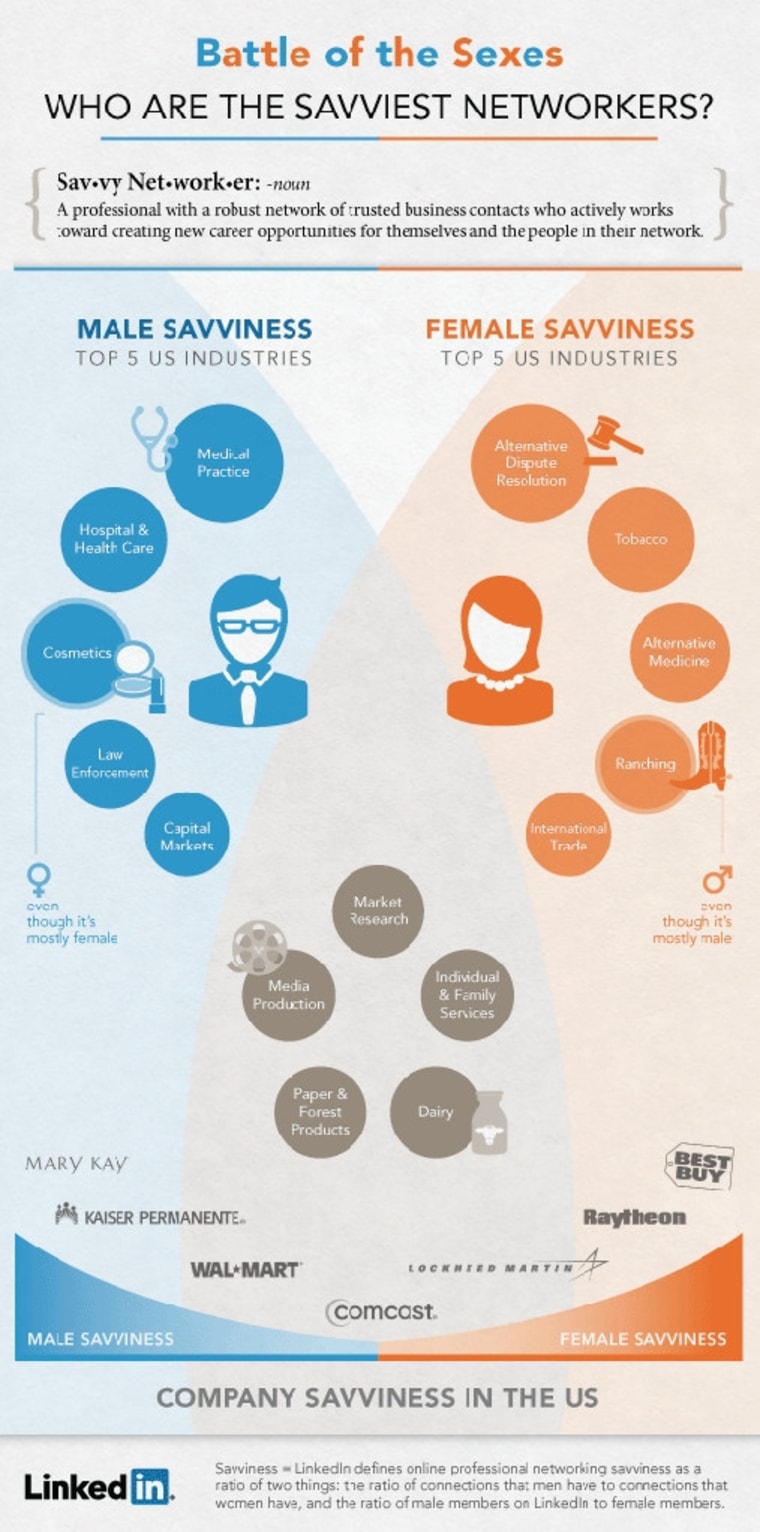Men are "more savvy networkers globally" on LinkedIn, according to an analysis done by the site, which has more than 100 million users.
In "The Gender Divide: Are Men better than Women at Social Networking?" on the site's blog, "savviness" is defined as "the ratio of two things: the ratio of connections that men have to connections that women have, and the ratio of male members on LinkedIn to female members."
And, while women predominate on many social networking sites, including Facebook and Twitter, men rule on LinkedIn.
There, nearly twice as many men (63 percent) as women (37 percent) use the site, Pew Research Center’s Internet & American Life Project noted that in a recent report.
But gender stereotypes do not prevail on LinkedIn, at least in the United States for women. Among the top five industries where "female savviness" prevailed: "alternative dispute resolution," "tobacco," "alternative medicine," "ranching" and "international trade."
The top five industries where "male savviness" are highest: "medical practice," "hospital and health care," "cosmetics," "law enforcement" and "capital markets."
Yup, if you read both of those previous paragraphs closely, you saw "cosmetics" in the male savviness list, and "ranching" and "tobacco" in the female savviness list.
"There are several things relating to gender that could explain the results: seniority, job function, desire for the minority gender to connect with the majority gender (or stay close to the minority gender), etc.," wrote LinkedIn's Scott Nicholson on the blog.
"Our goal with this post was not necessarily to test any of these hypotheses but instead to surface differences and spark a discussion as to why the behaviors in each industry or company exist."
And it's likely such a discussion is being sparked with LinkedIn's findings.
Related stories:
- Facebook best at privacy, LinkedIn worst: ranking
- Facebook users big on trust, close relationships: study
- LinkedIn share price soars in market debut
- LinkedIn hits 100 million members
Check out Technolog, Gadgetbox, Digital Life and In-Game on Facebook, and on Twitter, follow Suzanne Choney.
